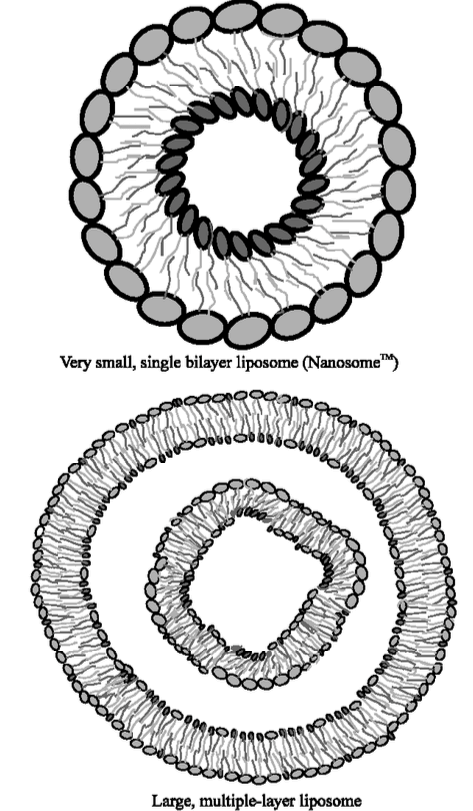Mempro™ Liposome Classification
Liposome technology has been a very useful tool in various scientific areas, including biophysics, chemistry, colloid science, biochemistry, and biology. Based on the well-established Mempro™ Membrane protein platform, Creative Biostructure provides multiple types of liposome products and customized liposome construction service.
Liposomes are useful carriers for delivering drugs, including small molecules and macromolecules (proteins, peptides and DNA). The size of liposomes ranges from very small (0.050 μm) to large (2.5 μm) in diameter. The quality of liposome suspensions is reflected by the mean size and the distribution of the liposomes
Based on the size of liposomes and the number of bilayers, liposomes are mainly classified into two categories:
(1) Multilamellar Vesicles (MLVs);
Multilamellar liposomes have structures similar to onions. MLVs have a multilamellar structure with concentric phospholipid spheres separated by water layer.
(2) Unilamellar Vesicles.
Unilamellar liposomes only have one single phospholipid bilayer sphere enclosing the aqueous solution.
UniLamellar vesicles are further classified into the following two categories:
(1)Large Unilamellar Vesicles (LUV);
(2)Small Unilamellar Vesicles (SUV).
 Figure 1. Single bilayer and Multiple layer liposomes
(Shaheen SM et al. Liposome as a carrier for advanced drug delivery. Pak J Biol Sci 2006, 9(6):1181–1191.)
Figure 1. Single bilayer and Multiple layer liposomes
(Shaheen SM et al. Liposome as a carrier for advanced drug delivery. Pak J Biol Sci 2006, 9(6):1181–1191.)
The size of the vesicles is a critical factor affecting the half-life of liposomes in circulation. Both the size of the liposomes and the number of bilayers affect the efficacy of drug encapsulation into liposomes. The detailed characteristics of these types of liposomes are introduced in the following links:
In summary, liposomes usually can be classified into the following types by their sizes:
Small Unilamellar Vesicles (SUV): 20 nm - 100 nm
Large Unilamellar Vesicles (LUV): 100 nm - 400 nm
Giant Unilamellar Vesicles (GUV): 1 µm and Larger
Multivesicular Vesicles (MVV): 200 nm - 3 µm
Large Multilamellar Vesicles (MLV): 200 nm - 5 µm
Reference:
Akbarzadeh et al. Liposome: classification, preparation, and applications. Nanoscale Research Letters 2013, 8:102
Shaheen SM et al. Liposome as a carrier for advanced drug delivery. Pak J Biol Sci 2006, 9(6):1181–1191.
Amarnath S, Sharma US. Liposomes in drug delivery: progress and limitations. Int J Pharm 1997, 154:123–140.
